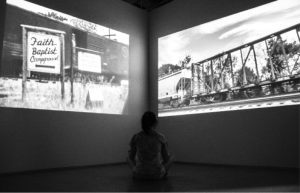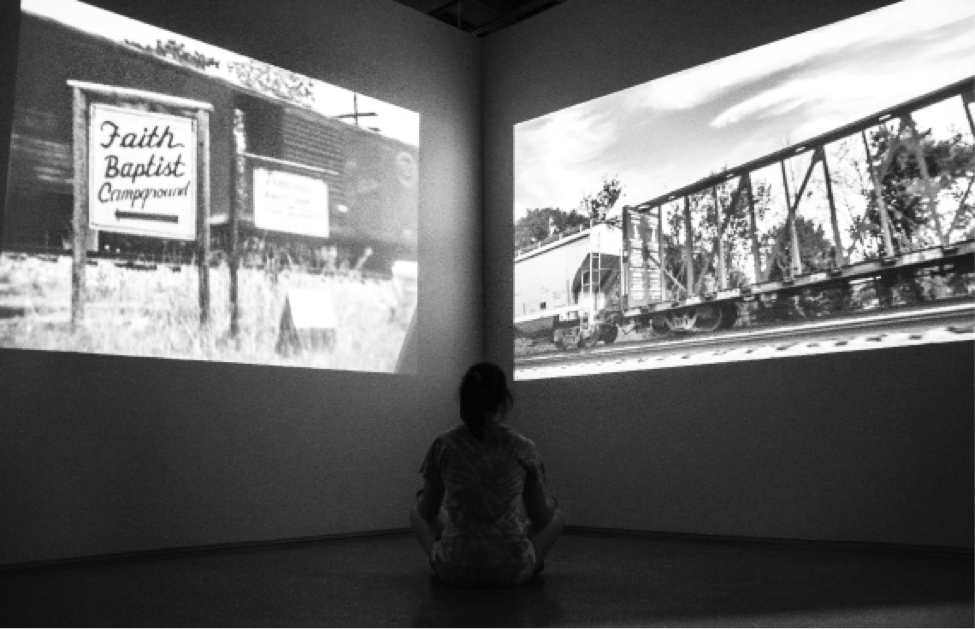By Courtney Henson (Contributor)
This year the Bernard A. Zuckerman Museum of Art presents two exhibitions to celebrate its annual opening this fall. “Hearsay” and “Some of its Parts” will be on display until Oct., 24, 2014.
 “Hearsay”, co-curated by Teresa Reeves, Kirstie Tepper and Julia Brock, includes many projects – all of which are intended to “revise and expand” upon traditional southern narratives, according to the Zuckerman Museum website. These pieces examine how gossip and speculation gives meaning to stories and questions how these stories should be told to the public.
“Hearsay”, co-curated by Teresa Reeves, Kirstie Tepper and Julia Brock, includes many projects – all of which are intended to “revise and expand” upon traditional southern narratives, according to the Zuckerman Museum website. These pieces examine how gossip and speculation gives meaning to stories and questions how these stories should be told to the public.
“Hearsay” also tells some of the stories of the South, exploring many tales of communities around Atlanta.
One piece, “After Malcolm: Islam and the Black Freedom Struggle”, aims to preserve the memory of the role of Islam in African American history and share the impact that traditional Islam had on the black nationalist movement after the death of Malcolm X, a leading spokesperson for Black Muslims during the Civil Rights Movement.
“Take Me With You” by John Q., also featured in “Hearsay”, illustrates the southern gay experience in past generations. It includes the video documentation of Crawford Barton’s trip from Atlanta to San Francisco at the beginning of gay liberation 40 years ago, which is played parallel to John Q’s documentation of his own road trip from Atlanta to Resaca.
“Hearsay” also includes several exhibits from artists Nikita Gale, Carolyn Carr, Robert Sherer, and George Long, as well as an exhibit curated by Adam Doskey and Frank Brannon on the history of Cherokee-language printing.
One such piece, “Heirloom”, contains a quilt meant to explore the “unusual lives and deaths of the six Mariettans portrayed on it,” said artist Sherer in an email.
“Watching lurid forensic television shows and reading true crime novels are among my guilty pleasures. When one lives in a small town where there are many things we are not supposed to talk about, gossip becomes the World Wide Web,” Sherer said. “I was delighted to find that most people share my interest in scandals, gossip, family secrets, and bizarre tales.”
By sharing this exhibit with the public, Sherer hopes to intrigue people with the stories of six Marietta citizens and have them realize that, “secrets can be exhumed and retold and become distorted through time”.
In “Some of its Parts” textile artist, Rowland Ricketts, and soundscape musician Norbert Herber worked together to create a work of art that appeals to viewers on a visual and audible level.
According to Indiana University’s Institute for Digital Arts and Humanities, Herber is known for using audio to explore the relationship between sound and people in different environments.
Ricketts received his MFA from Cranbrook Academy of Art and spent time in Japan training in indigo farming and dyeing, according to his website. He added a section in “Some of its Parts” that educates visitors about the indigo dyeing process.
“Some of its Parts” includes a piece called “Untitled- After Te-Ita”, in which Ricketts created by using a combination of stones and indigo-dyed wool.


